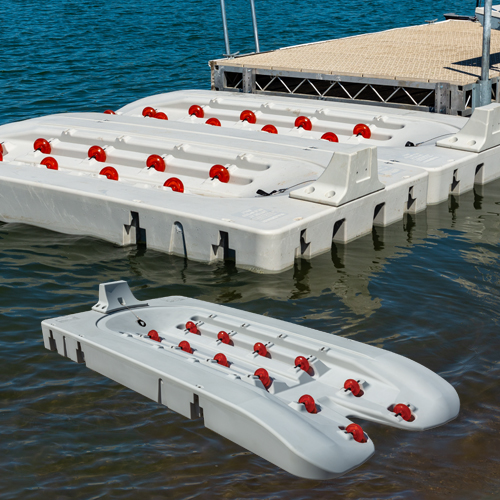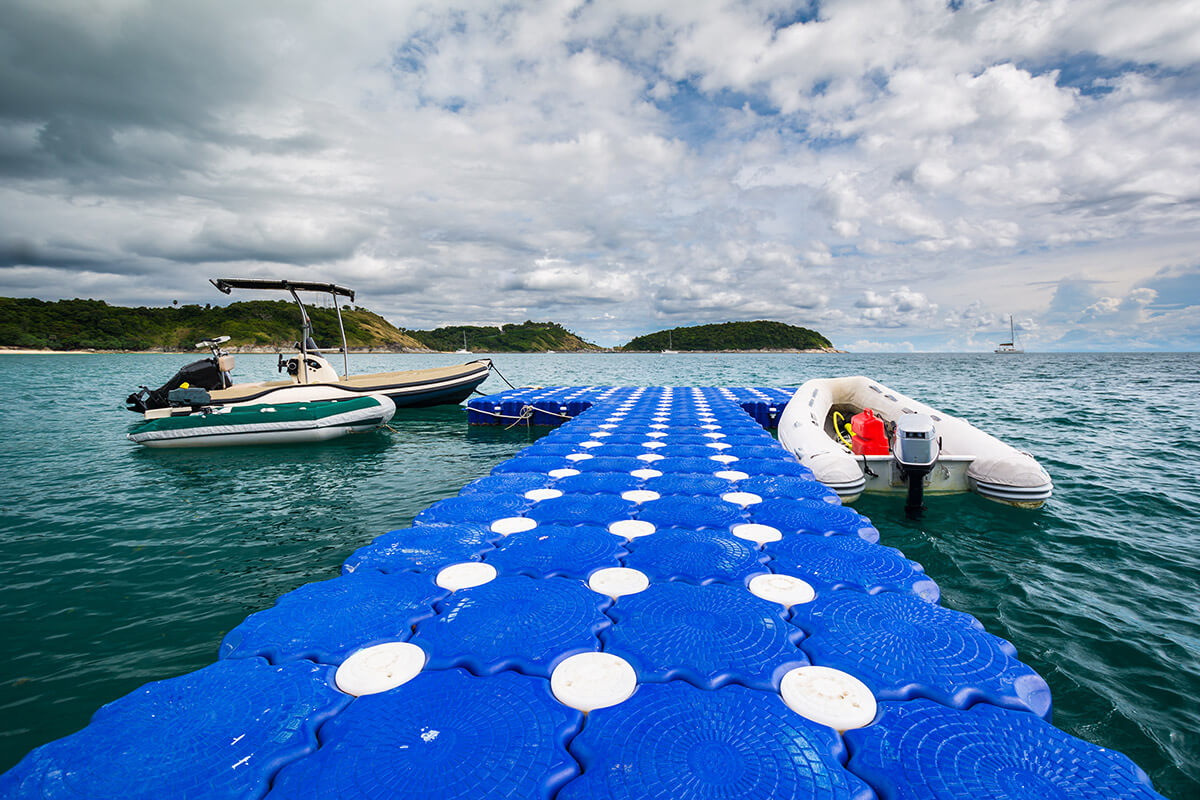Just How Floating Dock Company Knowledge Can Raise Your Waterside Experience
Develop the Perfect Docking Remedy With Floating Docks
Floating docks present a functional solution for a selection of maritime needs, adjusting effortlessly to varying water levels and diverse vessel kinds. Their modular nature enables quick installation and moving, yet the option of appropriate materials and style attributes is important for ensuring both functionality and visual allure. As we discover the essential elements that add to the efficiency of floating docks, a number of vital aspects regarding stability and upkeep will emerge, raising inquiries about how to optimize your docking experience. The subsequent conversation will certainly light up these vital considerations.

Benefits of Floating Docks
Floating docks offer various advantages that make them an excellent selection for numerous maritime applications. Unlike taken care of docks, floating docks surge and autumn with the trend, ensuring regular access for vessels.
Furthermore, floating docks are generally easier and quicker to mount contrasted to conventional fixed frameworks. Their modular style permits straightforward setting up and disassembly, assisting in maintenance and moving when necessary. This adaptability is particularly advantageous for short-lived applications or in settings where problems may alter.
Floating docks additionally have a tendency to be more eco friendly, as they minimize disruption to the seabed and surrounding water ecological communities. Their buoyant nature lowers the danger of damages to aquatic life, advertising a healthier setting. These docks can be tailored to accommodate various vessel dimensions, ensuring that they meet specific functional needs.
Inevitably, the mix of adaptability, convenience of setup, and ecological considerations makes floating docks a very reliable option for a vast array of maritime requirements.
Picking the Right Materials
Selecting the ideal materials for floating docks is critical to make sure sturdiness, longevity, and stability. The selection of products straight impacts the dock's efficiency in various ecological problems, including direct exposure to water, sunlight, and possible wear from aquatic website traffic.
Common products utilized for floating docks consist of aluminum, wood, and high-density polyethylene (HDPE) Aluminum is light-weight, corrosion-resistant, and calls for marginal upkeep, making it a superb option for longevity. Nevertheless, its first cost can be higher contrasted to various other products.
Wood, while aesthetically attractive and providing a conventional look, can be susceptible to rot and insect damage if not appropriately dealt with. Utilizing pressure-treated wood or naturally resilient varieties like cedar or redwood can minimize these issues.
HDPE is a preferred choice because of its resistance to UV rays and chemicals, in addition to being environmentally friendly. floating docks. It is available and light-weight in different colors, permitting for personalization
Eventually, the right material option will depend on certain needs, consisting of spending plan, desired aesthetics, and environmental considerations. Careful evaluation of these variables will result in a resilient and successful floating dock option.
Design Considerations for Security
When creating floating docks, ensuring security is an essential facet that can considerably impact their capability and safety. Stability in floating dock design is affected by numerous factors, including buoyancy, weight distribution, and the arrangement of components.
Weight distribution is vital; uniformly distributing lots throughout the dock stops tilting and boosts security. Larger layouts can use enhanced security, particularly in rough water problems, while longer docks might need additional assistances to avoid sagging.
An additional essential factor to consider is the environmental impact, consisting of wave action and wind. Incorporating attributes such as sidewalls or skirting can assist mitigate the impacts of environmental pressures, maintaining security in adverse problems. Ultimately, a mix of thoughtful design, product selection, and understanding of ecological elements will certainly produce a floating dock that satisfies both stability and safety needs.
Installment Tips and Strategies

Next, safeguard the essential authorizations and abide by local guidelines, see this website which might dictate installment methods and environmental considerations. If called for, engage a certified specialist experienced in floating dock installations. Usage high-grade products designed for marine atmospheres to improve toughness and longevity.
When positioning the dock, straighten it parallel to the shoreline to facilitate easy gain access to. Make sure that the anchoring system is robust, utilizing cinder block or helical supports to support the dock versus wind and wave activity. It's critical to account for seasonal water degree changes, including possible ice activity in colder climates.
Throughout the installation, confirm the dock's floatation and stability before finalizing the anchoring. On a regular basis evaluate the installment for any type of indicators of wear or damages. By adhering to these tips and techniques, you can achieve a secure, practical, and cosmetically pleasing floating dock setup that satisfies your needs.
Upkeep and Treatment Standards
Caring and preserving for floating docks is critical to lengthening their lifespan and making sure safe use. Routine examinations need to be conducted to determine any kind of indications of wear, damages, or marine development. Try to find splits, loosened fittings, or blemished areas on the dock's surface, as these problems can jeopardize architectural stability.
Cleaning up is important. Make use of a stress washer to eliminate algae, barnacles, and particles, which can collect over time. For stubborn growth, take into consideration eco-friendly cleaner that will not harm aquatic life.
Furthermore, examine the mooring lines and anchors frequently to guarantee they are totally free and safe from rust. Replace any kind of frayed or damaged lines promptly to keep security.
During extreme climate, such as storms or freezing problems, take preventive actions. Safeguard the dock with extra mooring lines and, if feasible, get rid of any removable parts to avoid damage.
Conclusion
In conclusion, the execution of floating docks offers a functional and reliable docking remedy ideal for different maritime applications. Their versatility to changing water levels, integrated with a modular layout, permits easy personalization and moving. Choosing appropriate materials enhances both sturdiness and visual charm, while careful factor to consider of stability makes certain security and long life. With appropriate installment and routine upkeep, floating docks can offer effective and trustworthy docking experiences for a vast array of vessels.
As we discover the essential aspects that add to the performance of floating docks, a number of crucial variables concerning security and upkeep will certainly arise, raising questions regarding just how to maximize your docking experience. Unlike fixed docks, floating docks rise and autumn with the trend, ensuring constant availability for vessels.When designing floating docks, guaranteeing security is an essential facet that can significantly influence their performance and safety. Security in this content floating dock style is affected by different variables, consisting of buoyancy, weight circulation, and the setup of parts. Inevitably, a mix of thoughtful layout, product option, and understanding of ecological aspects will certainly produce a floating dock that satisfies check that both stability and safety requirements.